Some time ago, we wrote a piece on why you shouldn’t trust the dome-lid thermometer on your grill. We wanted people to free themselves from the lies that dome thermometers tell and to use better tools for improving their BBQing and grilling, and the dome thermometer wasn’t helping. Today we want to show you how you can use better tools (maybe some you already have) to help you cook better in your kitchen.
Some people use dial-face oven thermometers that either hang from—or sit on—a rack to double check their oven temperatures. This seems like a pretty good idea. Almost all ovens fall out of calibration and burn either hotter or colder than the dial settings would suggest. And as far as uses for a bimetallic strip dial thermometer go, putting one in the corner of your oven where it has plenty of time to come to temp and shouldn’t get banged around too much to fall out of calibration is better than most.
That said, you probably know what we think of dial thermometers for temping a turkey or roast (spoiler: they’re not much good). It turns out that though a dial oven thermometer is probably better than nothing, we can do way better. We’ll talk about how and why you can do better for your monitoring oven temps and, while we’re at it, have a little chat about fridge and freezer temps, too.
Why oven thermometers are important
If you want your cake to rise and set correctly, if you want your roast to turn out perfect, you need to know that your oven is doing what it says it is. The internal thermostat that runs your oven may not be accurate, and that can lead to bad cooking. But even beyond lying internal thermostats, ovens break down. What you don’t want is for your oven to give out in the middle of cooking a big family dinner and not know about it. Having a thermometer in the oven is key to knowing everything is behaving as it should. And really, as we’ll see, you really should use a good digital thermometer for that task.
We actually tested our high-end oven with several leave-in probes and plotted the data to look at the temperature distribution inside the oven during a cook and were surprised to see what the spread was like. For the test, we preheated the oven then cooked a pork loin on the center rack. Watch this video to see a sped up three-dimensional rendering of the oven gradients we measured:
Kind of amazing, huh? Did you notice the variance between the different corners of the oven during the cook? Almost 100 degrees in places. Did you notice the parts of the oven that burned hotter than the set 375°F (191°C) temperature? Did you notice the brief flash of yellow when we opened the oven door and the oven cooled dramatically for a moment? Did you notice the rhythmic rising and falling of the temperature during the cook as the oven thermostat cycled on and off? And that is with a very high end professional convection oven. Your oven might experience even more dramatic swings.
Because there can be so much variance, it doesn’t make sense to take the temperature in a part of the oven that isn’t where the food will actually be. Placing the thermometer as close to the center of the oven where you’ll actually be cooking will give you the most accurate idea of what’s happening.
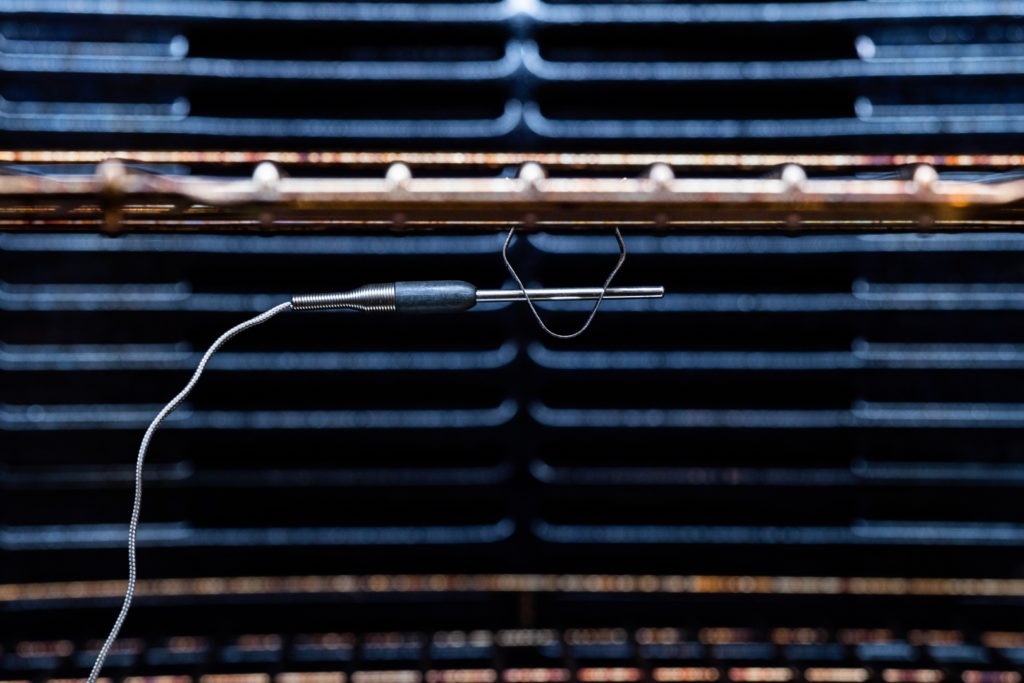
Why hanging dial oven thermometers are no good
Truth be told, there are a number of reasons why you shouldn’t trust that little hanging thermometer in your oven. You know, the one you bought at a big box store? Let’s take look.
- Dial-gauge thermometers have wide temperature ranges, often running from 100°F (37°C) to 500°F (260°C). Every tick-mark on the face is a 10°F (5.6°C) jump. That’s some terrible resolution!
- Where do you even put it? If you hang it from the rack, (under the center of your food, as we recommend above) you can’t see it unless your rack is up high enough that it’s visible through your oven window. If you open the oven to see what the temp is, you let up to 50°F (28°C) of heat our, and when you close the door again, the temperature spikes to make up for the lost heat. Sure, You could place it on the rack, but we all know it’s going to fall through.
- Ovens cycle. They heat and cool and heat and cool and if you look at your thermometer at one point in that cycle, that’s all the info you get. If it’s at a trough, you’ll think the oven is cold, and if it’s at a peak, you’ll think it’s hot. Either way, you get no picture of the environment as a whole over time.
- Last and most importantly, dial-face oven thermometers are untestable, and, more importantly, un-calibratable. There is no single sensor point on it to lower into an ice bath, and even if you could submerge the whole thing in ice water, the dial doesn’t go down to 32°F (0°C)—and because there is no mechanism for calibration, so you couldn’t adjust it if it did.
How digital oven thermometers solve cooking problems
Back when those oven thermometers were invented, they were of great help, I’m sure. But technology has advanced a lot since then, and we have better solutions to the problems that industrial-age thermometry presented us with. One such solution is the BlueDOT™ digital thermometer with Bluetooth® wireless technology, but any digital leave-in probe thermometer will work.
Using a digital leave-in allows you to track a cook without opening the oven to look at the thermometer. More on that below.
- All of our leave-in probe thermometers have an accuracy of at least 1.8°F (1°C) and an on-screen resolution of at least 1° (in either Fahrenheit or Celsius), that’s literally 10-times better than an oven dial thermometer!
- Placing the probe from your thermometer in the oven is no trouble, especially if you have the optional Pro-Series® High Temp Air Probe With Grate Clip. You can install the probe on the underside of the rack in your oven, right in the center where the food goes or maybe on top of the rack just to the side of your pan. Wherever you put it, visibility is no matter: you read the thermometer from outside the oven, so rack position in the oven is irrelevant.
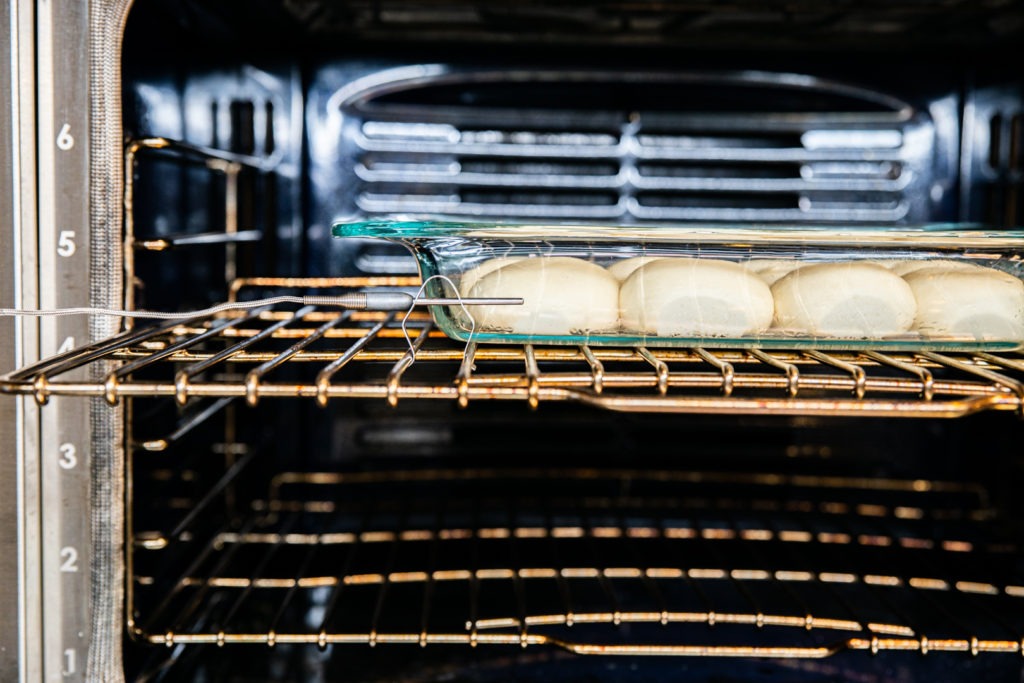
- Depending on the model of leave-in thermometer, you can see highs and lows as the oven temp swings. By looking at the temperature range of the whole cycle, you can calculate what the average is and know that your oven is behaving properly. There’s no guessing about what part of the cycle the oven is on when you look at the temp—it’s easy to tell.
- Finally, our leave-in probe thermometers are calibrated and can be recalibrated, if needed. They are backed by an A2LA accredited lab and our industry-leading quality standards.
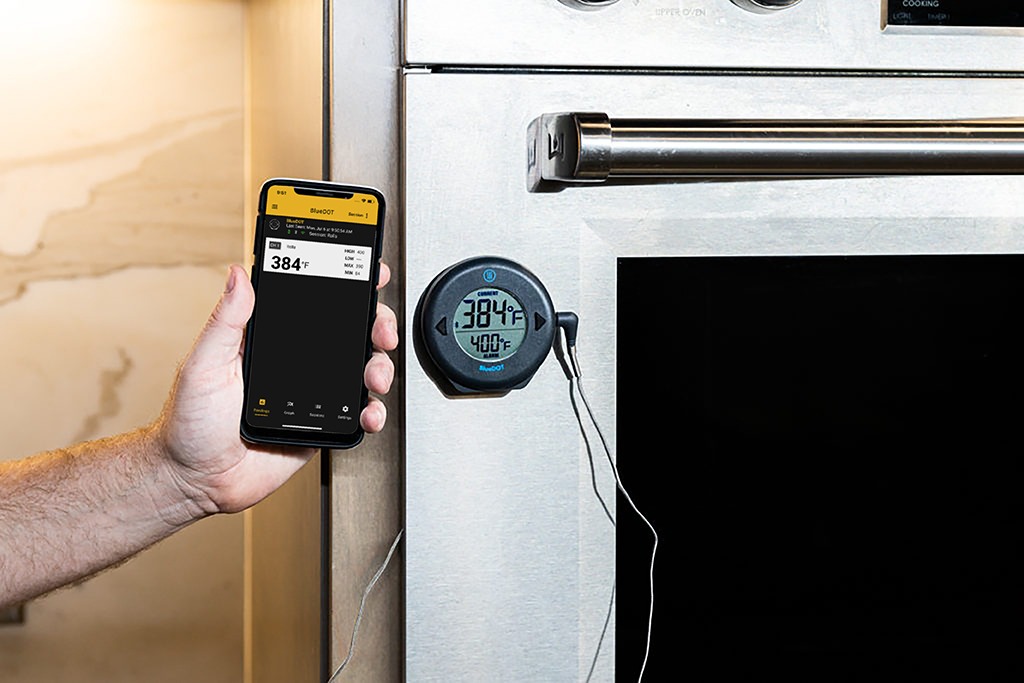
If you have a BlueDOT or any of the other smart-connected ThermoWorks thermometers, you can go beyond the basics of observation and enter the realms of fun graph geekery. The BlueDOT, for instance, will create a graph in the ThermoWorks BBQ app that visualizes the data for you so you can actually see the temperature swings.
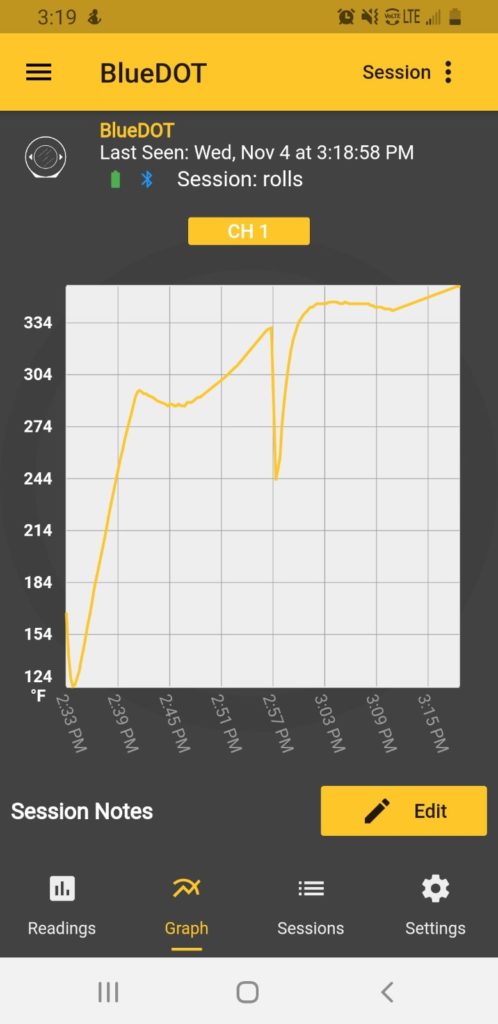
You can also download the data and look at it in your spreadsheet software.
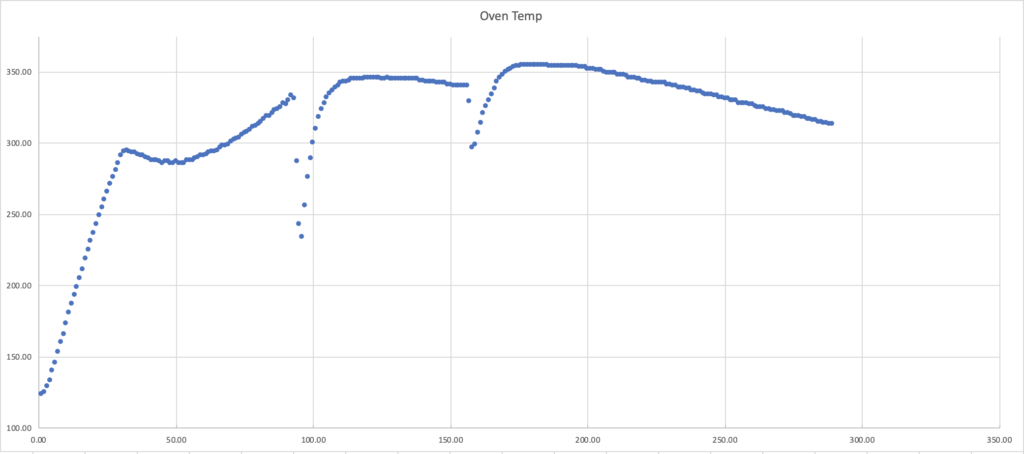
In fact, our friend Rose Levy Beranbaum, the highly acclaimed queen of cakes, takes a BlueDOT with her when she travels to teach classes or do demonstrations. While on the road, she cooks in ovens she has not worked with before—ovens that may not behave in the way she expects. Enter BlueDOT. Rose will use the BlueDOT while baking a test cake, then calculate the average temperature from the high and low oven swings. Then she knows how to adjust the oven temperature to be exactly what she needs.
For even more detail on how to properly calibrate your oven using the minimum and maximum recorded temperatures on your digital thermometer, read Test Your Oven’s Accuracy or watch this video:
Refrigerator temps, freezer temps and monitoring
Of course, it should be mentioned that tools that are good for oven monitoring are also good for refrigerator and freezer monitoring. To keep your food safe, your refrigerator needs to stay below the temperature danger zone limit of 40°F (4°C) and your freezer needs to stay at or below 0°F (-18°C). So, is your fridge working properly?
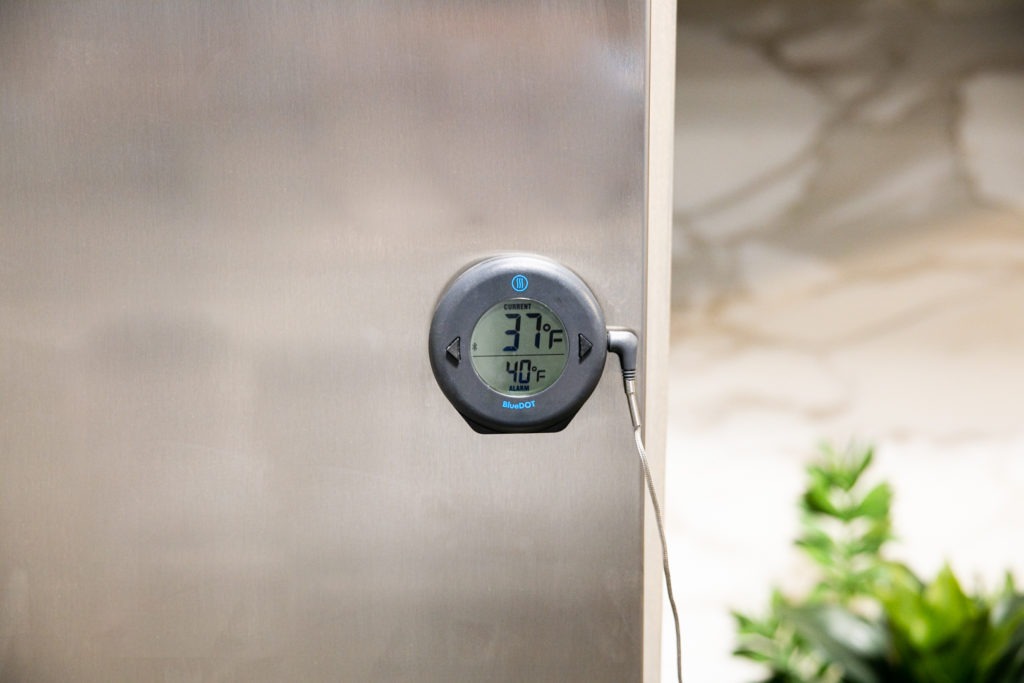
Refrigerators and freezers cycle on and off, just like ovens do, and their peaks may reach outside the prescribed safe zones. An annual checkup of your fridge and freezer temperatures is a great way to make sure your food stays safe and fresh. Place a probe in the refrigerator or freezer for 24 hours with a smart device within communication range of the BlueDOT and look at the graph that the graph generates. If your peaks are too high, adjust your thermostat.
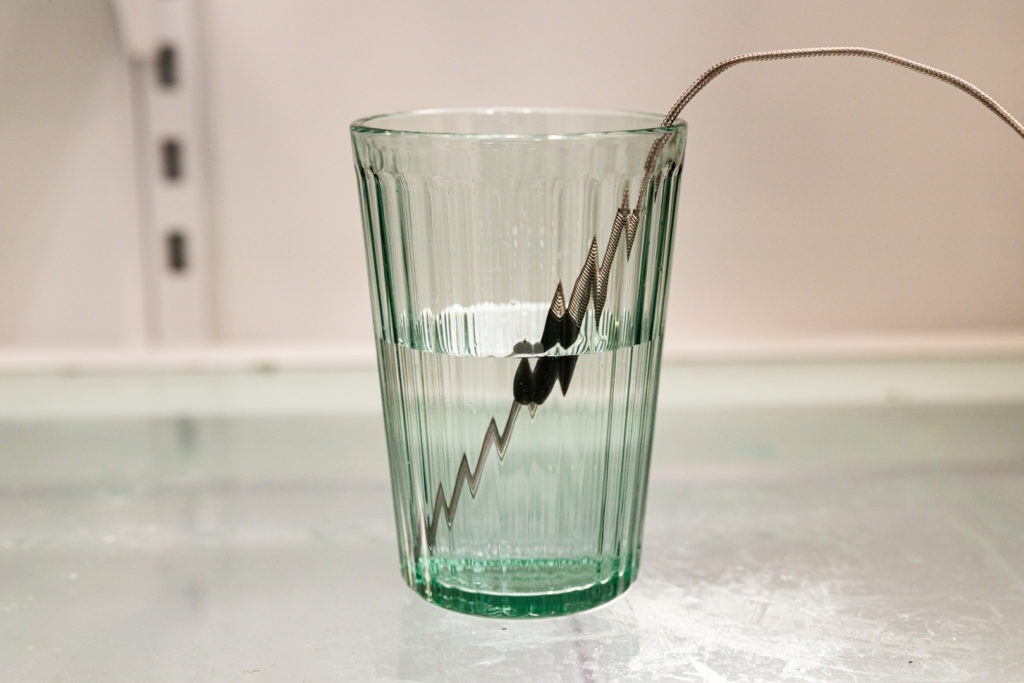
This year, get the most out of your cooking equipment by verifying that it is running properly. Use the BlueDOT or other digital tools from ThermoWorks to test your gear and get the very best out of your cooking.
Shop now for products used in this post:
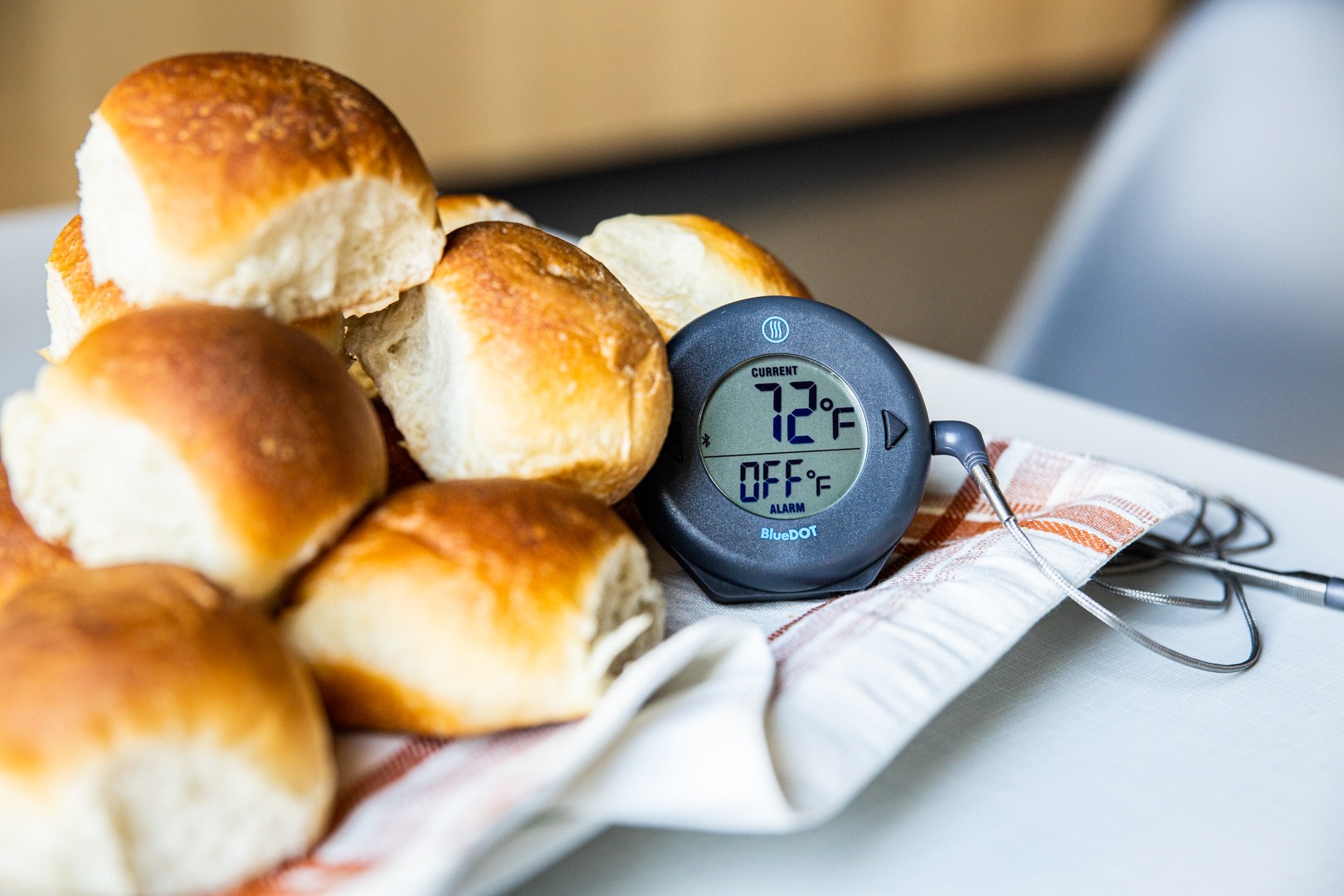
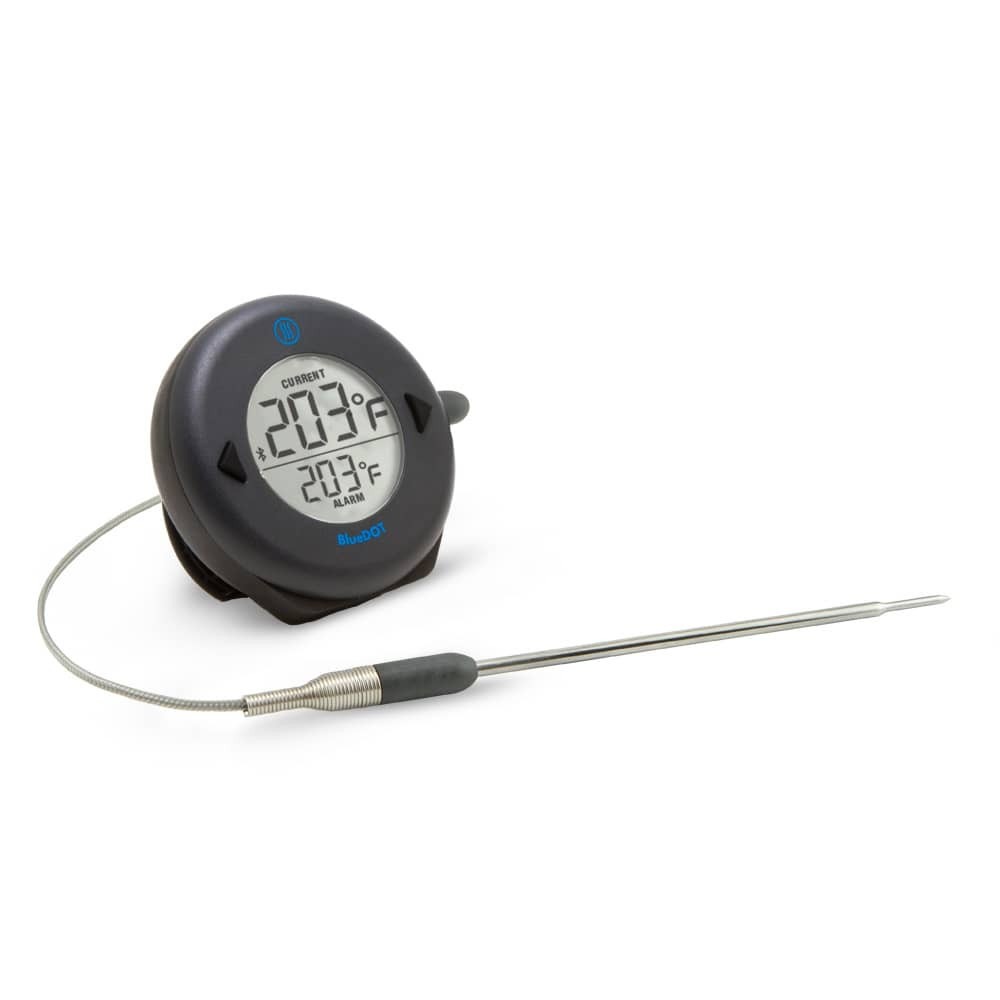

Dave says
I absolutely rely on all my Thermoworks devices. I enjoy their reliability and accuracy.
Nathan J says
Interesting. I have found that using the air probe and leaving them in the oven, the probes die pretty quickly. I had presumed that you COULDN”T leave them in the oven all the time.
Martin says
Nathan,
You don’t want to leave it in the oven ALL the time, but every so often during a cook, it’s a good idea. Especially during cooks at different temperatures—it may be that your oven is accurate at 350°F but not at 425°F.
David Crandon says
The test of your high-end convection oven was very interesting. But, what is the explanation for the high variance in different parts of the oven? You state up to 100 degrees’ variance in different corners. But, since the probes are measuring air temps, and the fan is circulating the air, this doesn’t make sense. In thinking about possible explanations, I can only conclude that the oven fan circulating the air isn’t doing a good job. Does the fan also turn on and off during the temp cycles?
Martin says
That’s exactly the problem. The fan is pretty unidirectional, and the geometry of the oven prevents airflow to the corners. This can create surprising differences in temperature throughout the oven.